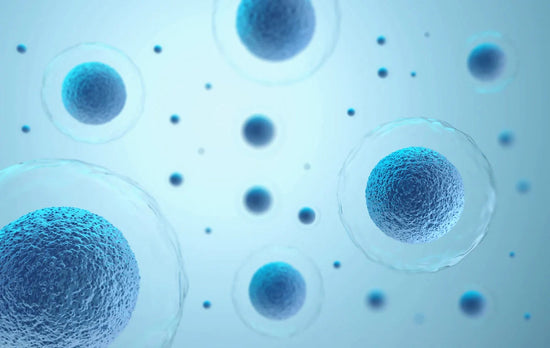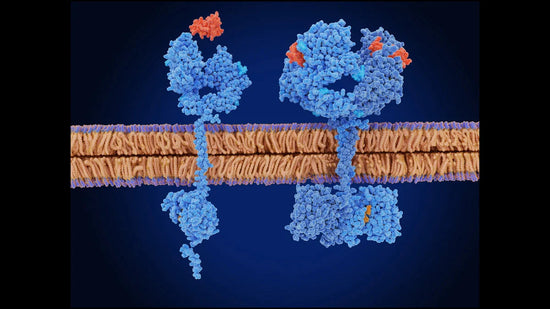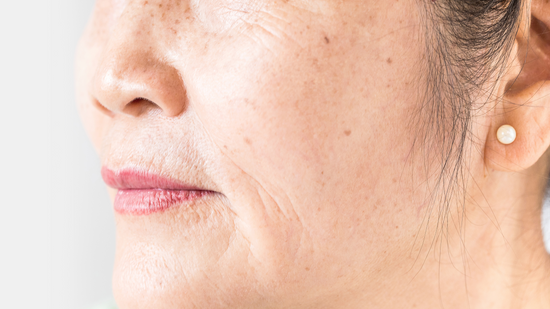Exosomes in Skin Care Products and Treatments
Exosomes[1] are the best antiaging new skin care ingredient found in skin rejuvenating cosmeceuticals and are considered the latest in cutting-edge skin care technology- but what are the benefits, are they safe, and which products are best? I recommend these products to many patients in my dermatology proactive. It is a bit difficult to explain the science but some of these topical serums work the same as PRP (platelet rich plasma) injections.
However, not all exosome containing skin care products and treatments that are coming out will be worth the expensive price. How do you know which exosome skin care products are the best?
Exosomes Table of Contents
What is the best brand of exosome skin care product?
Although there are only a few exosomes products on the market- they are not the same at all. As I will explain- the source of the exosome and how the exosomes are extracted is critical to get skin benefits from exosome serums.
Right now the skin care brand plated™ Skin Science has the best data to back up its use.[2] Used twice a day for 6 weeks it was shown to improve the skin’s appearance by reducing wrinkles and redness. These results were evident at weeks 4-6. This means you must use the product for 4-6 weeks before you will see a result. The heart transplant cardiologist Dr. Atta Behfar who patented these platelet derived exosomes for use in aging skin recommend using:
plated™ Skin Science Intensive Repair 0.5 oz for 6 weeks (which is about 2 of these pumps)
followed by
plated™ Skin Science Revitalizing Essence 1.0 to maintain the results.
After a month or 2 on the plated™ Skin Science Revitalizing Essence- If you feel your skin needs freshening- you can do another cycle of the plated™ Skin Science Intensive Repair.
To learn more about how exosomes work on skin, see my You Tube video interview with skin regeneration doctor Saranya Wiles MD and transplant cardiologist Dr. Atta Behfar. We discuss definition and benefits of exosomes on skin.
What skin conditions do exosomes treat?
Exosomes are used as antiaging ingredients in medical grade skin care products and are used in cosmetic procedures such as after microneedling. They are usually used to rejuvenate skin but may be effective at treating skin problems such as:
- acne pimples
- eczema
- herpes cold sores
- inflammation
- rosacea
- wounds
- wrinkles
Are exosome products right for your skin type?
Any time you are building a skin care routine and choosing the best skin care products, you should be matching the skin care products to your Baumann Skin Type. It is the only way to be confident that the money and time you are spending is worth it.
Skin Benefits of Topical Exosomes
Exosome treatments are already used to treat many things such as muscle injury, joint injuries, protect hearts prior to transplantation, and heal diabetic wounds. But in dermatology and antiaging, they are used as antiaging ingredients for skin rejuvenation.
This is what exosomes are used for in dermatology:
Rejuvenate the skin by increasing collagen and decreasing senescent cells
Speed healing
Decrease inflammation
Exosome serums are most often used to treat fine lines and wrinkles and to soothe skin. They may make pimples and cold sores heal faster but it is too early to know if they are effective for this use.

What are exosomes?
The definition of an exosome is “the smallest type of extracellular vesicle[3] ranging from 30 to 150 nm in size (diameter).”
Extracellular vesicles are lipid bilayer bound sphere-like shapes that contain and protect important cell signaling cargo such as proteases (MMPs), inflammatory cytokines, growth factors, mRNA, miRNA, mitochondrial DNA and genomic DNA.
Function of exosomes?
The function of an exosome is to allow cells to communicate to each other using forms of communication that would be unstable if not protected by the exosome’s bilayer lipid membrane. Exosome must be intact to deliver the contents and messages to the target tissue.
Where do exosomes come from?
Exosomes are naturally occurring and must be isolated from some sort of body tissue. Skin cells such as keratinocytes and fibroblasts secrete exosomes that have many skin benefits. Exosomes activate stem cells that then migrate to sites of injury and facilitate skin remodeling leading to skin rejuvenation. The actions of exosomes differ depending upon the source of exosomes.
The exosomes used in skin treatments usually come from:
- fat cells (adipose)
- umbilical cord
- placenta
- platelets
The source of the tissue determines what messages and actions the exosomes have.
Because platelets play such an important role in wound healing, collagen formation and inflammation, platelets are the best source of exosomes for skin rejuvenation. Exosomes isolated from platelets have similar benefits to injectable PRP treatments (Platelet Rich Plasma) used to treat skin aging.
How exosomes are extracted from the body tissue is very important. If not isolated properly, they can break down and lose their contents. For example, if centrifuges are used to extract the exosomes, the speed and size of the centrifuge affect how intact the exosomes are when extracted. If an exosome is not intact, it no longer has the beneficial contents (RNA, growth factors) that it needs for skin rejuvenation.
The skin benefits of exosomes depend upon many factors such as:
- Origin
- Size
- Content
- Function
This is why not all skin care products and treatments with exosomes do what they claim! There are so many difficult processes that have to occur to get the correct exosomes out of the right skin tissue and make sure it contains the best signaling molecules for the desired skin benefits. The resulting serum must also be stable to have a good shelf life.
Are exosomes better than stem cell treatments?
It is now believed that many of the beneficial effects that stem cells have for skin rejuvenation actually are actually a result of secreted exosomes[4] rather than from the stem cells. This means that exosomes can be used instead of stem cells. Exosomes are safer and less expensive to use than stem cells.
How do exosomes cause skin effects?
Exosomes are lipid membrane packets that contain cell signaling molecules that allow cells to communicate with each other. The exosomes are released from the cells and move through body fluids to reach their target to communicate messages.
Inside the exosome sphere is a space called the interluminal space. Imagine it as the inside of a ball. This interluminal space contains cell signaling proteins, growth factors and RNA that are protected inside the exosome from being degraded.
Safety
Exosomes seem to be safe. Safety would depends on what type of exosome and how it is used (IV vs topical vs injected.) You do not want exosomes that cross the blood brain barrier. The PEP exosomes in Plated do not cross the blood brain barrier. I have not seen data on the other types of exosomes and their ability to cross the blood brain barrier, but it is doubtful that topically applied ones will.
I am following all the developments in this field and so far there are not safety concerns.
What do exosomes do?
Exosomes change the way cells in the body act. They can even transfer RNA material to another cell.
Exosomes act on other cells to affect:
What do exosomes contain?
Exosomes contain different types of contents depending upon their source and function.
They have exosomes messaging molecules such as:
- mRNA
- micro RNA
- growth factors
- Immune factors
Evidence based research studies on exosomes:
There are many studies on exosomes. Here are a few that looked at the use of exosomes on human skin.
Platelet derived exosomes:
A single arm longitudinal, non-randomized study looked at exosomes derived from platelets that were used twice daily on the face.[7] Visia-CR imaging showed a statistically significant improvement in skin health which correlated in improvement in redness and wrinkles on the face. Improvement in skin occurred at 4-6 weeks of twice daily use of plated™ Skin Science Intensive Repair Serum.
Human placenta mesenchymal stem cell derived exosomes
A placebo controlled randomized double blind trial looked at 40 patients. In 20 of these patients, exosomes derived from mesenchymal stem cells from human placenta were placed on skin that had been microneedled. In patients that received the exosomes, improvement in the skin’s appearance was seen with improved tone, quality and clarity.[8] The results showed continuous improvement from Day 30-120. In contrast, the 20 patients in the control group who did not received exosomes. Although both groups received microneedling treatments on days 0,30,60 and 90, only the exosome treated group reported a high degree of satisfaction. Exosome sare a great addition to microneedling procedures because no adverse events were seen in this study and the injury caused by microneedling creates an inflammatory trigger that stimulates the exosomes to respond with regenerating signals.
Human induced pluripotential stem cells from cell culture
Exosomes isolated from human induced pluripotential stem cells protected human fibroblasts in cell culture when irradiated with UVB light.[9]
What is the science of how exosomes work?
For the science geeks like me- here is more in-depth information for your learning pleasure:
Platelet derived exosomes that contain platelet derived exosome product (PEP)
Induced pluripotent stem (iPS) cell-derived exosomes (iPS-Exos)
Mesenchymal stem cell-derived exosomes (MSC-exosomes)
Mesenchymal stem cell-derived exosomes (MSC-exosomes) have gained
great attention due to their immunomodulatory and regenerative functions.[16]
Mesenchymal cell exosomes (MSC exosomes) are produced from connective tissue stem cells and in some cases are isolated from amniotic fluid. [17] They have been shown to:
- Stimulate fibroblast proliferation and migration[18]
- Increase collagen extracellular matrix production[19]
- Promote angiogenesis[20],[21],[22]
- Modulate inflammation[23]
- Affect immune response[24]
- Reduce skin scarring[25]
-
MSC exosomes increase ATP production: MSC exosomes contain the 5 enzymes involved in the ATP-generating stage of glycolysis, namely, GAPDH, PGK, PGM, ENO, and PKM2.[26] This increases levels of ATP and NADH.
- MSC exosomes decrease oxidative stress.
- MSC exosomes act on the immune system by converting inflammatory T Helper 1 cells to anti-inflammatory T Helper 2 cells and increasing anti-inflammatory cytokines like IL-10, TGF-beta3, TIMP, TNF alpha RA, and IL-IRA.
- MSC exosomes regulates extracellular matrix formation by Increasing production of TGF-beta 3 and regulating the ratio of Type III to Type I Collagen
Let us help you find the best exosome products for your skin type. It all starts by taking the skin type quiz.

Do exosomes cross the blood brain barrier?
According to Dr. Atta Behfar who developed the platelet derived exosome product called Plated they do not cross the blood brain barrier. He said in an email to me", "We have done extensive pharmacokinetic work on PEP, the clinical grade product. Platelet exosomes do not cross the blood brain barrier when given IV, so for sure would not be of impact when utilized topically."
Are exosomes real?
Yes, they were discovered years ago but they were so small and fragile that we did not understand what they do until recently. Look at studies in scholar.google and you will see they are being used in many different aspects of medicine to treat different diseases and problems such as damaged joints and heart disease.
What do exosomes carry?
RNA, and signaling molecules such as cytokines and growth factors. Exosomes are a type of extracellular vesicle.
Why are exosomes important?
Their spherical structure surrounds cell signals and helps them get to the target tissue. Think of exosomes as a protective coating on cell signals,
Are exosomes stem cells?
Exosomes are made by stem cells and seem to be the way stem cells exert their activity and influence cells around them.
Where do exosomes come from?
Exosomes come from cells. In medicine they are extracted from platelets, fat cells or placental cells. The platelet derived exosomes seem to be the vest in skin care products.
Best References and Scientific Publications on Exosomes in Skin Care:
- L. Baumann, Ch. 5 Intrinsic Aging in Baumann’s Cosmetic Dermatology (McGraw Hill 2022)
- Proffer, S. L., Paradise, C. R., DeGrazia, E., Halaas, Y., Durairaj, K. K., Somenek, M., ... & Wyles, S. P. (2022). Efficacy and Tolerability of Topical Platelet Exosomes for Skin Rejuvenation: Six-Week Results. Aesthetic Surgery Journal, 42(10), 1185-1193.
- Baraniak, P. R., McDevitt, T. C. (2010). Stem cell paracrine actions and tissue regeneration. Regenerative Medicine, 5, 121-143.
- Goodarzi, P., Larijani, B., Alavi-Moghadam, S., Tayanloo-Beik, A., MohamadiJahani, F., Ranjbaran, N., et al. (2018). Mesenchymal stem cells-derived exosomes for wound regeneration. Advances in Experimental Medicine and Biology, 1119, 119-131.
- Wang, P., Theocharidis, G., Vlachos, I. S., Kounas, K., Lobao, A., Shu, B., ... & Veves, A. (2022). Exosomes derived from epidermal stem cells improve diabetic wound healing. Journal of Investigative Dermatology.
- Chernoff, G. (2021). The Utilization of Human Placental Mesenchymal Stem Cell Derived Exosomes in Aging Skin: An Investigational Pilot Study. Journal of Surgery, 6, 1388.
- Oh, M., Lee, J., Kim, Y. J., Rhee, W. J., & Park, J. H. (2018). Exosomes derived from human induced pluripotent stem cells ameliorate the aging of skin fibroblasts. International Journal of Molecular Sciences, 19(6), 1715.
- Shi, A., Li, J., Qiu, X., Sabbah, M., Boroumand, S., Huang, T. C. T., ... & Moran, S. L. (2021). TGF-β loaded exosome enhances ischemic wound healing in vitro and in vivo. Theranostics, 11(13), 6616.
- Wan, R., Hussain, A., Behfar, A., Moran, S. L., & Zhao, C. (2022). The Therapeutic Potential of Exosomes in Soft Tissue Repair and Regeneration. International Journal of Molecular Sciences, 23(7), 3869.
- Wellings, E. P., Huang, T. C. T., Li, J., Peterson, T. E., Hooke, A. W., Rosenbaum, A., ... & Houdek, M. T. (2021). Intrinsic Tendon Regeneration After Application of Purified Exosome Product: An In Vivo Study. Orthopaedic Journal of Sports Medicine, 9(12), 23259671211062929.
- Ren, Y., Zhang, S., Wang, Y., Jacobson, D. S., Reisdorf, R. L., Kuroiwa, T., ... & Zhao, C. (2021). Effects of purified exosome product on rotator cuff tendon-bone healing in vitro and in vivo. Biomaterials, 276, 121019.
- Kobayashi, H., Ebisawa, K., Kambe, M., Kasai, T., Suga, H., Nakamura, K., ... & Kamei, Y. (2018). Effects of exosomes derived from the induced pluripotent stem cells on skin wound healing. Nagoya Journal of Medical Science, 80(2), 141.
- Ha, D. H., Kim, H. K., Lee, J., Kwon, H. H., Park, G. H., Yang, S. H., ... & Cho, B. S. (2020). Mesenchymal stem/stromal cell-derived exosomes for immunomodulatory therapeutics and skin regeneration. Cells, 9(5), 1157.
- Hu, L., et al. (2016). Exosomes derived from human adipose mensenchymal stem cells accelerates cutaneous wound healing via optimizing the characteristics of fibroblasts. Scientific Reports, 6, 32993.
- Medina, A., Ghahary, A. (2010). Transdifferentiated circulating monocytes release exosomes containing 14-3-3 proteins with matrix metalloproteinase-1 stimulating effect for dermal fibroblasts. Wound Repair and Regeneration, 18, 245-253.
- McBride, J. D., et al. (2017). Bone marrow mesenchymal stem cell-derived CD63(+) exosomes transport Wnt3a exteriorly and enhance dermal fibroblast proliferation, migration, and angiogenesis in vitro. Stem Cells and Development, 26, 1384-1398.
- Liang, X., et al. (2016). Exosomes secreted by mesenchymal stem cells promote endothelial cell angiogenesis by transferring miR-125a. Journal of Cell Science, 129, 2182-2189.
- Bronckaers, A., et al. (2014). Mesenchymal stem/stromal cells as a pharmacological and therapeutic approach to accelerate angiogenesis. Pharmacology & Therapeutics, 143, 181-196.
- Kotzerke, K., et al. (2013). Immunostimulatory activity of murine keratinocyte-derived exosomes. Experimental Dermatology, 22, 650-655.
- Fang, S., et al. (2016). Umbilical cord-derived mesenchymal stem cell derived exosomal microRNAs suppress myofibroblast differentiation by inhibiting the transforming growth factor-beta/SMAD2 pathway during wound healing. Stem Cells Translational Medicine, 5, 1425-1439.
- Arslan, F., Lai, R. C., Smeets, M. B., Akeroyd, L., Choo, A., Aguor, E. N., ... & de Kleijn, D. P. (2013). Mesenchymal stem cell-derived exosomes increase ATP levels, decrease oxidative stress and activate PI3K/Akt pathway to enhance myocardial viability and prevent adverse remodeling after myocardial ischemia/reperfusion injury. Stem Cell Research, 10(3), 301-312.
- Wang, T., Jian, Z., Baskys, A., Yang, J., Li, J., Guo, H., ... & Long, Q. (2020). MSC-derived exosomes protect against oxidative stress-induced skin injury via adaptive regulation of the NRF2 defense system. Biomaterials, 257, 120264.
- Jiang, W., Tan, Y., Cai, M., Zhao, T., Mao, F., Zhang, X., ... & Yan, Y. (2018). Human umbilical cord MSC-derived exosomes suppress the development of CCl4-induced liver injury through antioxidant effect. Stem Cells International, 2018.
- Zhang, W., Liu, R., Chen, Y., Wang, M., & Du, J. (2022). Crosstalk between Oxidative Stress and Exosomes. Oxidative Medicine and Cellular Longevity, 2022.
- Li, D., Zhang, D., Tang, B., Zhou, Y., Guo, W., Kang, Q., ... & He, D. (2019). Exosomes from human umbilical cord mesenchymal stem cells reduce damage from oxidative stress and the epithelial-mesenchymal transition in renal epithelial cells exposed to oxalate and calcium oxalate monohydrate. Stem Cells International, 2019.
- Vyas, K. S., Kaufman, J., Munavalli, G. S., Robertson, K., Behfar, A., & Wyles, S. P. (2023). Exosomes: the latest in regenerative aesthetics. Regenerative Medicine, 18(2), 181-194.
- Kaufman-Janette, J., Cazzaniga, A., Jacobson, A., Jankov, L. L. E., Copeland, K., Behfar, A., & Wyles, S. (2023). Effect of Topical Platelet Extract Daily Serum as a Cosmetic Product to Reduce Facial Redness. The Journal of Clinical and Aesthetic Dermatology, 16(10), 48.
- Dayan, S., Gandhi, N., Wilson, J., Kola, E., Jankov, L. E., Copeland, K., ... & Behfar, A. (2023). Safety and efficacy of human platelet extract in skin recovery after fractional CO2 laser resurfacing of the face: A randomized, controlled, evaluator‐blinded pilot study. Journal of Cosmetic Dermatology, 22(9), 2464-2470.









